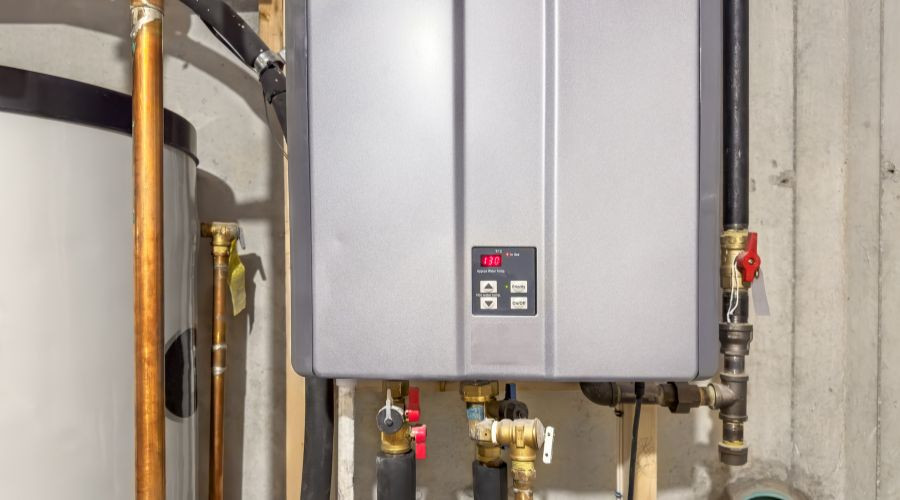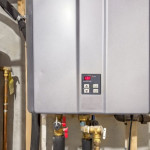Why Install a Tankless Water Heater?
A tankless water heater revolutionizes hot water usage in modern homes, offering an energy-efficient, space-saving alternative to bulky storage tank water heater systems. This guide provides insights into the use and benefits of instantaneous water heaters, as well as guidance on determining when a replacement for older models is necessary.
What Is a Tankless Water Heater and How Does It Work?
A tankless water heater heats water only as needed, bypassing the constant energy demands of a traditional storage water heater. Unlike systems that store and reheat gallons of water throughout the day, tankless models activate instantly when a hot tap is turned on, delivering on-demand results without a hot water tank.
When water enters the unit, a flow sensor triggers the heating process. Gas-powered units ignite burners beneath heat exchangers, while electric models rely on heating elements to rapidly warm incoming water. The result: continuous hot water delivered directly to appliances and fixtures.
Despite their compact design, tankless water heater systems are powerful enough to serve entire households. Depending on size and fuel type, most units can deliver 2–5 gallons of hot water per minute and are more energy-efficient than traditional systems. This energy efficiency is largely due to the elimination of standby heat loss, where stored water cools and requires reheating.
Benefits of Installing a Tankless Water Heater
 Tankless water heater installation provides both immediate and long-term advantages for residential use. Hot water is delivered instantly, without the delays or energy waste associated with conventional storage water heater models.
Tankless water heater installation provides both immediate and long-term advantages for residential use. Hot water is delivered instantly, without the delays or energy waste associated with conventional storage water heater models.
Endless hot water is a key advantage of these heaters; interruptions during back-to-back showers or appliance cycles become a thing of the past. Unlike a hot water tank, which may take 30–60 minutes to refill and reheat, an instantaneous water heater maintains a steady supply of hot water.
Another benefit is the compact, wall-mounted design. These systems occupy up to 80% less space than traditional storage tank water heaters, making them ideal for utility rooms, closets, or small basements. Their longer lifespan also reduces the long-term costs of water heater replacements.
Signs It's Time to Replace an Old Water Heater
 When signs of system failure begin to appear, replacing the water heater may be necessary. Unit age is a primary factor, as older water heater systems have a significantly shorter lifespan than tankless models, and even the latter typically do not last beyond two decades. Discolored or rusty water often indicates internal corrosion that warrants immediate replacement.
When signs of system failure begin to appear, replacing the water heater may be necessary. Unit age is a primary factor, as older water heater systems have a significantly shorter lifespan than tankless models, and even the latter typically do not last beyond two decades. Discolored or rusty water often indicates internal corrosion that warrants immediate replacement.
Additional warning signs include fluctuating water temperatures and unusual noises like popping or rumbling, which point to sediment buildup or damaged heating elements. Rising energy bills without a corresponding change in usage often indicate a decline in system efficiency. Water leaks around the base of the storage tank water heater usually signal irreversible damage.
When these issues arise, installing a tankless water heater offers a worthwhile upgrade. Not only do tankless water heaters eliminate the limitations of a hot water tank, but they also provide continuous hot water with greater energy efficiency. Though the initial cost may be higher, the reduced utility bills and extended service life make instantaneous water heaters a smart investment for any home.
About Honey Go Fix It
Honey Go Fix It is a 5-star rated plumbing company proudly serving Dayton and the surrounding areas. They provide friendly service from master plumbers who utilize the latest technology. Call them now for tankless water heater installations in Beavercreek, OH.


